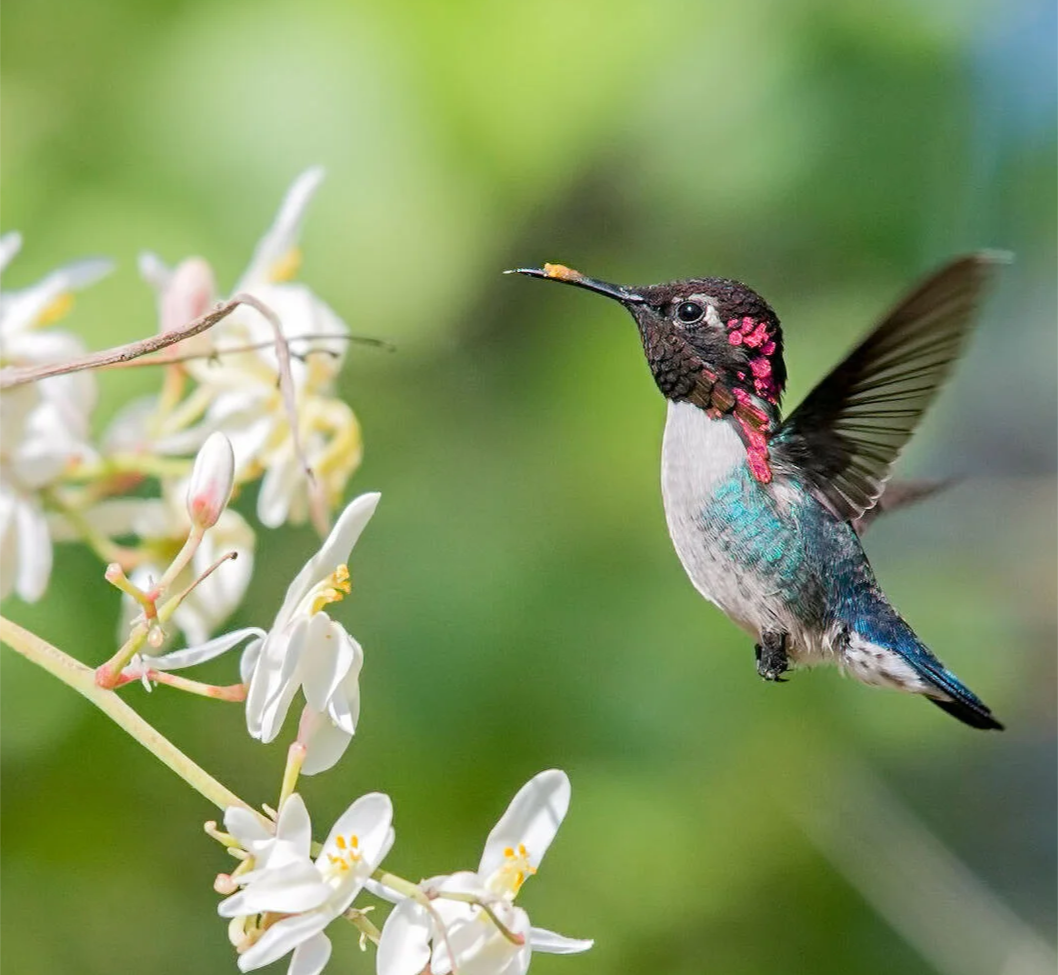Important Facts For Prelims
Aztec Hummingbirds and Indian Sunbirds
- 28 Feb 2023
- 4 min read
Why in News?
Recently a study found that the loss of a key gene, FBP2 makes hummingbirds more efficient at breaking down sugar to use it for energy.
- Hummingbirds’ hovering flight, a seemingly effortless suspension in air, is achieved by burning sugar in their flight muscles at a blisteringly fast rate.
What are Hummingbirds?
- About:
- Hummingbird, native to American continent, has approximately 350 species which are found in Iridescent colours. These birds are comparable to India’s Sunbirds.
- Aztecs referred to them as Huitzilin or ‘A ray of sun’.
- Size:
- These are small birds, barely 5cm long and weigh 2 grams.
- Humming:
- Their signature ‘Hum’ is created by beating the wings upto 50 times per second.
- Manoeuvrability:
- They can hover majestically as they sip nectar from a flower (mostly Tubular flowers such as Lantana and rhododendron), and even fly backward.
- Relative to their body mass, hummingbirds have the highest metabolic rate (calories burnt per minute) among vertebrates. Most of this energy comes from nectar.
- Rapid sugar uptake by their digestive system ensures that they utilise energy from nectar ingested just a few minutes ago.
- Mimicry and Dance:
- Hummingbirds are capable of vocal mimicry like parrots and some songbirds.
- They are also able to align their muscular movements with auditory sensations that come to their ears creating a dance.
How are Hummingbirds similar to Sunbirds?
- About:
- Indian Sunbirds, though unrelated to Hummingbirds share many common features through convergent evolution. They are part of Nectariniidae family.
- Though slightly larger, the sunbirds can hover briefly, and go for bright, tubular flowers. They are critical pollinators of the ‘Flame of the Forest’.
- As the energy demands of hovering is very high, sunbirds need to ‘perch’ while feeding, unlike Hummingbirds.
- Habitat:
- They live in tropical forests, inland wetlands, savannas, and scrubland in Africa, southern Asia, the Middle East, and northern Australia.
Note: Flame of the forest is a leguminous tree, Butea frondosa, native to Eastern India and Myanmar, having hanging clusters of scarlet flowers.
What is the Significance of Recent Research?
- Recent genome studies have shown that hummingbirds lost the gene (FBP2) for a key enzyme involved in gluconeogenesis around the time when hovering appeared.
- While intense exercise in humans can lead to a spike in blood glucose levels due to gluconeogenesis. That is not the case in hummingbirds.
- They have a unique metabolism that allows them to efficiently use energy from nectar.
- This study could lead to new insights into energy metabolism and potential therapeutic applications for humans.
Note: Gluconeogenesis is a process that transforms non-carbohydrate substrates (such as lactate, amino acids, and glycerol) into glucose.






